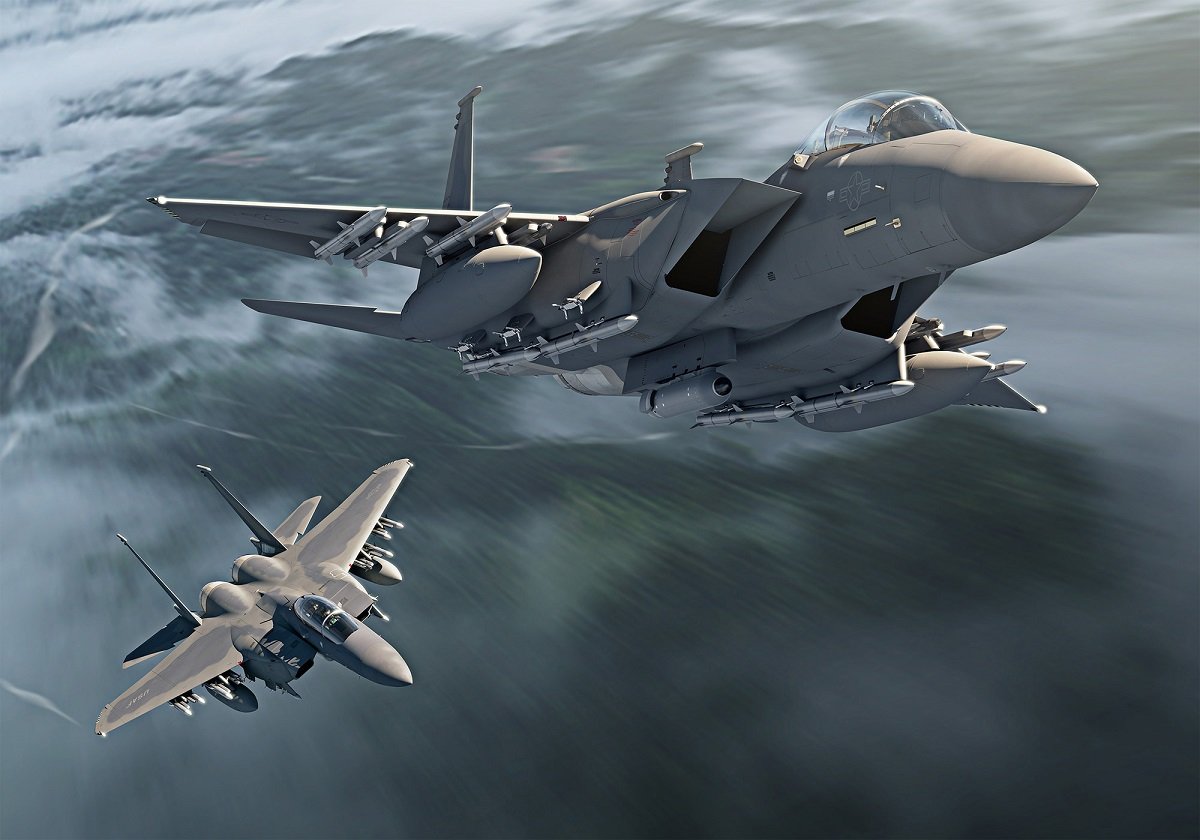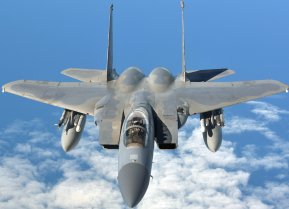F-15EX is Now More Expensive Than Air Force's F-35 Stealth Fighter
As critics within and outside the U.S. Air Force have noted, the F-15EX – an aircraft that was supposed to be a cheaper alternative to the Lockheed Martin F-35 Lightning II – now has a higher price tag than the fifth-generation stealth fighter.
Aerospace giant Boeing is reportedly looking for ways to control the costs of its F-15EX Eagle II fighter aircraft after it was announced that the costs will rise – not fall – from Lot 2 to 3. The company had predicted the per-plane "flyaway cost" would be under $80 million.
However, those costs – which value an aircraft's cost of production and production tools essential for building it – are actually soaring, and Boeing had to backtrack on its estimates.
In September, the United States Air Force signed a contract for Production Lots 2 through 4 – totaling 48 Eagle IIs – an official said that the per-plane cost for the jets in the second lot was about $90 million, and those costs are only set to go up.
The per-plane cost for the F-15EX in Lot 3 is expected to be as high as $97 million and $94 million for Lot 4.
F-15EX: Buy in Scale?
Boeing is now looking to ground the jet's price tag.
"We're looking at 'how do we buy at scale,' We're looking at 'how do we partner with suppliers for long-term affordability.' We're looking at 'how do we control our own costs in the factory, whether that's kind of infrastructure cost or whether that's efficiency that we can continue to build in?'"Mark Sears, vice president of fighters at Boeing, told Defense One last Friday.
"Today's economics and inflation and workforce instability—all of that is real and so we're trying to be as proactive as possible about how do we try to overcome that or at least stem the growth in the future," Sears added, but didn't say whether the flyaway costs could return to $90 million in subsequent production lots.
Sears reaffirmed that the company's focus is to make the F-15EX affordable but explained that it is difficult to look into the future and understand precisely what could happen.
He pointed to inflation, which has been feet across the aerospace sector – and efforts are being made to keep costs in check while growing the production capacity to meet demand.
Boeing has hoped to find foreign military buyers for the F-15EX, which could help control the costs of the aircraft. Indonesia has expressed interest in the Eagle II and could buy up to 24 of the aircraft, while Poland and Israel have each inquired about it as well.
Costs More Than an F-35 Lightning II
As critics within and outside the U.S. Air Force have noted, the F-15EX – an aircraft that was supposed to be a cheaper alternative to the Lockheed Martin F-35 Lightning II – now has a higher price tag than the fifth-generation stealth fighter.
F-35 Joint Program Office spokesman Russ Goemaere told Breaking Defense last month that the Air Force's variant of the stealth fighter – the conventional takeoff and landing F-35A – currently has an "average" flyaway cost of $82.5 million for the jet's 15th, 16th and 17th production lots, which will be delivered in calendar years 2023, 2024 and 2025.
Indeed, the average flyaway price for the vertical takeoff and landing F-35B is $109 million, while the carrier-launched F-35C has a flyaway price of $102.1 million for lots 15-17, but neither variant is used by the Air Force.
"The F-35 Joint Program Office is committed to finding cost reductions across the acquisition lifecycle," said Goemaere. "We are proud of the learning that has occurred and reduced costs for vastly increased fifth-generation capability that surpasses many fourth-generation aircraft in production today."
In April 2022, John Venable, senior research fellow for defense policy at The Heritage Foundation, a Washington-based think tank that is focused on national defense, noted that the Air Force's math on the F-15EX and F-35 didn't add up – and he questioned why the service remained so focused on the Boeing-made aircraft when the F-35A offered greater capabilities and was already was understood to be an aircraft that would be cheaper to acquire.
"We're paying more and we're getting something that's markedly less than the value of the F-35," Venable also told Defense One.
Defense Industrial Base
One consideration for the F-15EX, according to its proponents, is that the program is propping up America's defense industrial base – and it should be noted that Boeing and Lockheed Martin are the last two U.S. companies that even build fighter jets.
The Air Force may not want to find itself in the same situation as the U.S. Navy, which is dealing with a shortage of shipyards to build and maintain its fleet. The Navy is facing repair delays for its submarines, while it unable to keep its warship production on schedule.
However, Venable has further suggested that Lockheed's F-16, at $63 million apiece, would be less expensive than the F-15EX. The F-16 is currently only made for foreign militaries.
Replacing the F-15C/Ds
Boeing has also touted the F-15EX's capabilities, describing it as a 21st-century evolution of the proven F-15 Eagle. The twin-engine, all-weather tactical F-15 has had one of the most successful track records of modern fighters, with more than 100 victories and no losses in aerial combat.
Externally, the aircraft may resemble the original F-15. Still, Boeing had improved the fighter for sales to international partners, including South Korea and, more recently, Kuwait, and in the process, determined that it could be the right fighter for the U.S. Air Force – an affordable fourth-generation plus plus (4++) fighter to complement its fifth-generation fleet of Lockheed Martin F-35 Lightning IIs.
It features fly-by-wire flight controls, new weapons stations, a new electronic warfare suite, advanced radar and computer, conformal fuel tanks, and a strengthened airframe. The improved F-15EX is further equipped with a deep magazine that will allow it to carry many advanced weapons – yet with a 28 percent larger payload than the F-15E. At the same time, the fighter will require only minimal transitional training and little additional manpower from the older versions of the F-15.
According to the Air Force, the EX has also required little to no infrastructure changes.

The Air Force has estimated that the F-15EX fighter shares about 70 percent of parts with the current F-15Cs and F-15Es that it will be replacing. In addition, the original production lines in St. Louis remain in place, while the aircraft's training facilities, maintenance depots, and other infrastructure are available to be shifted to F-15EX support.
Author Experience and Expertise
Peter Suciu is a Michigan-based writer. He has contributed to more than four dozen magazines, newspapers, and websites with over 3,200 published pieces over a twenty-year career in journalism. He regularly writes about military hardware, firearms history, cybersecurity, politics, and international affairs. Peter is also a Contributing Writer for Forbes and Clearance Jobs. You can follow him on Twitter: @PeterSuciu.
All images are industry handouts.


